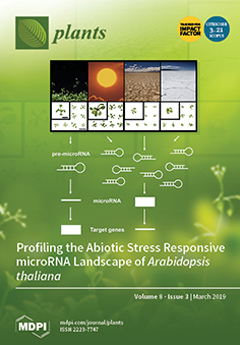Lycoris longituba, belonging to the Amaryllidaceae family, is a perennial bulb bearing flowers with diverse colors and fragrance. Selection of cultivars with excellent colored and scented flowers has always been the breeding aim for ornamental plants. However, the molecular mechanisms underlying color
[...] Read more.
Lycoris longituba, belonging to the Amaryllidaceae family, is a perennial bulb bearing flowers with diverse colors and fragrance. Selection of cultivars with excellent colored and scented flowers has always been the breeding aim for ornamental plants. However, the molecular mechanisms underlying color fading and aroma production during flower expansion in
L. longituba remain unclear. Therefore, to systematically investigate these important biological phenomena, the tepals of
L. longituba from different developmental stages were used to screen and analyze the metabolic components and relevant genes. Utilizing the Illumina platform, a total of 144,922 unigenes were obtained from the RNA-Seq libraries. Kyoto Encyclopedia of Genes and Genomes (KEGG) enrichment analysis indicated that the phenylpropanoid biosynthesis and flavonoid biosynthesis pathways might play important roles during color and aroma changes. Metabolomic analysis identified 29 volatile organic components (VOCs) from different developmental stages of
L. longituba tepals, and orthogonal partial least-squares discriminate analysis (OPLS-DA) revealed that
trans-β-ocimene—a terpene—was the most important aroma compound. Meanwhile, we found the content of anthocyanin was significantly reduced during the tepal color fading process. Then, we identified two
dihydroflavonol-4-reductase (
DFR) and three
terpene synthase (
TPS) genes, for which expression changes coincided with the production patterns of anthocyanins and
trans-β-ocimene, respectively. Furthermore, a number of MYB and bHLH transcription factors (TFs) which might be involved in color- and aroma-formation were also identified in
L. longituba tepal transcriptomes. Taken together, this is the first comprehensive report of the color and fragrance in tepals of
L. longituba and these results could be helpful in understanding these characteristics and their regulation networks.
Full article






